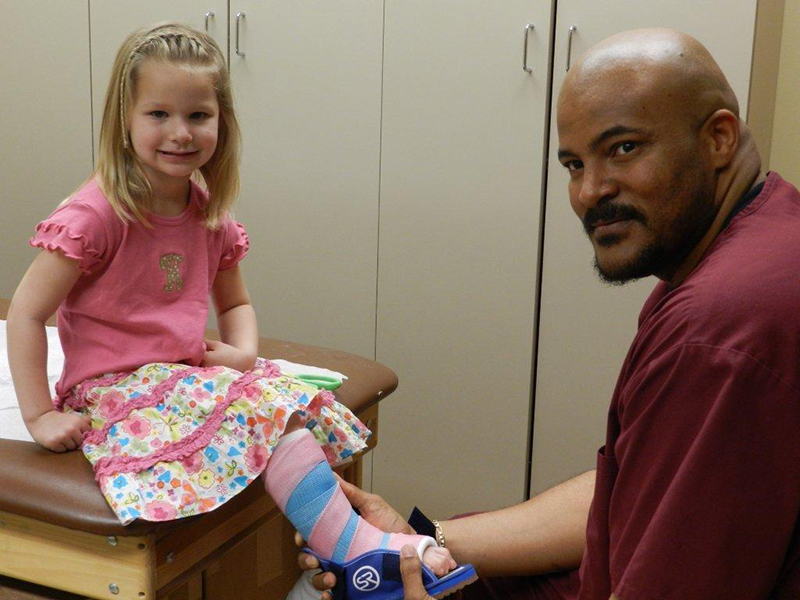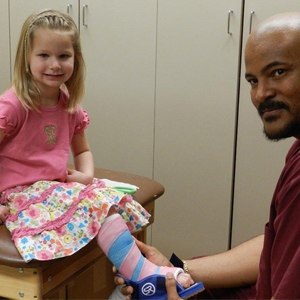While the experience is often scary for both children and their parents, it is not uncommon for a child to break or fracture a bone. Young bones are fragile and it is important that fractured bones are treated properly to restore growth plates.
Bone is a living tissue and will actually bleed upon a break and will immediately begin healing by recruiting cells from the bloodstream to assist in the healing process. A growth plate is located at the end of each long bone in the body. This amazing structure consists of growth cartilage that allows the bone to grow longer as you age. These growth plates are functional in girls until about the age of 16 and age 14 for boys and then they will naturally close.

- Pediatric Femur Fractures - Injuries to the thigh bone can result in a femur fracture. This is not an uncommon injury for children and treatment varies depending on the child’s age.
- Toddler's Fractures - Difficult to see on an x-ray, the most common type of a toddler’s fracture is a break to the tibia, or shin bone, and is usually treated with a cast.
- Nursemaid's Elbow - This can occur with a sudden pull or jerk on a child’s arm, causing the radial head of the elbow to slide out of the joint. Symptoms include inability to bend the elbow and pain.
- Elbow Fractures in Children - This is one of the most common injuries for older children. Prompt treatment is necessary as there are several growth plates surrounding the elbow joint.
- Forearm Fractures - The middle of the bone or “shaft” can fracture as well as the radius at the end of the bone near the wrist. These breaks are usually very frightening because they can make the arm appear deformed. Depending on how the injury occurred, surrounding soft tissue can also be injured making the forearm very unstable.
- Ankle Fractures - As opposed to a sprain, a true fracture involves the growth plate. Surgery will be required if the weight bearing surface of the ankle or growth plate is affected. Sometimes it can be hard to tell if it’s a sprain or a fracture so it’s best to have the child examined by an orthopedic doctor.
Children’s fractures are much different from adult fractures. Depending on the location of the fracture, our orthopedic doctors will most likely perform an x-ray to examine the bone and growth plate and then determine if surgery is required. Young injuries can often be treated with a cast, avoiding orthopedic surgery, and sometimes can heal naturally as the bone continues to grow.






